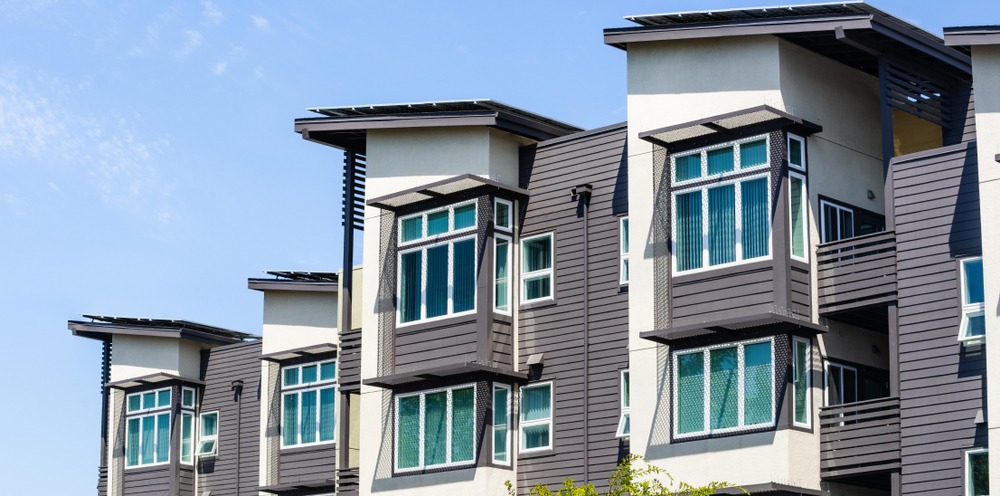For many real estate investors, multifamily properties provide the optimal opportunity at the intersection of convenience and wealth generation. Instead of building a portfolio of spread-out and disparate single-family home properties that multiply the work involved, a multifamily home can help you generate income from several occupants while only having to manage a singular location.
Although many investors and homeowners are familiar with more traditional single-family home loans and mortgages, many wonder how multifamily loans work and how to qualify for multifamily loans.
This article will review the four types of multifamily loans, their benefits, target borrowers, and more to help you determine the best loans for multifamily properties.
What is a multifamily loan?
Multifamily loans help refinance and purchase smaller properties comprised of several units and larger apartment complexes, including those in the commercial real estate sector. Any domicile with more than two housing units is considered multifamily, but in the eyes of lenders, the term applies to 5+ unit dwellings. These loans are often easier to qualify for than retail or office buildings because they promise regular tenant income from rent.
How do they benefit investors?
Providing a solid opportunity for both novice and seasoned investors, multifamily loans often come with lower interest rates for terms that go up to 35 years—slightly longer than the typical residential loan and significantly longer than the average commercial loan. Investors can choose which kind of property interests them, whether it’s an already-stable property with lower returns and lower risk or a new build with both higher returns and higher risk. Either way, this investment helps build wealth and equity quickly as long as you can meet the multifamily loan requirements to get help from the lenders.

Here are the 4 types of multifamily loans:
1. Conventional multifamily mortgage
As the name implies, this is the most standard loan for multifamily properties and is typically used to purchase 5+ unit apartment dwellings that are ready to be rented out. Like a traditional residential mortgage, there are stringent requirements that an investor must meet to qualify, including a level of cash reserves and a benchmark credit score. With 15-30 year durations and fixed or variable interest rates, these loans are available at most traditional banks and bear the closest resemblance to the typical residential mortgage, only scaled up to suit multiple residencies. The requirements can make this type of loan slightly more difficult to qualify for than some of the others on this list.
2. Government-backed multifamily mortgage
Like the conventional option, these multifamily loans apply to buildings of 5 or more units purchased by an investor. When considering how to get approved for a multifamily loan that is government-backed, the requirements can be more inconsistent, as the terms for each loan may vary, and they may have minimum occupancy requirements. Loan requirements will consistently need to adhere to relevant guidelines outlined by federal bodies such as Fannie Mae, Freddie Mac, and the FHA.
3. Portfolio multifamily loan
For investors who can’t meet the requirements of a conventional mortgage, the portfolio option is how to qualify for a multifamily loan to add this type of property to their real estate portfolio. Unlike the government-backed mortgages, which are sold through Fannie Mae and Freddie Mac, these loans are held directly by mortgage companies. They don’t have the same stipulation to meet federal requirements. Because of this, investors can use portfolio multifamily loans to finance several properties using a higher debt service coverage ratio that is riskier for the lender. This may come with slightly higher interest rates and fees, but it does allow for more significant purchases with looser underwriting guidelines.
4. Multifamily Bridge loan
Reading this list, you might be wondering what kinds of loans allow investors, large and small, to purchase disheveled homes and flip them to resell. That is where the Multifamily Bridge loan comes in. Typically, Multifamily Bridge loans, like hard money loans or multifamily bridge loans can be used to finance this type of investment. What is a multifamily bridge loan? Multifamily bridge lenders can offer financing for both the property and the additional capital needed to renovate and enhance the property quickly. These loans are short in duration, usually under three years, have moderate to higher interest rates, and interest-only payments. They are much easier to qualify for. Hard money loans offer a more accessible option with even looser qualification requirements.


